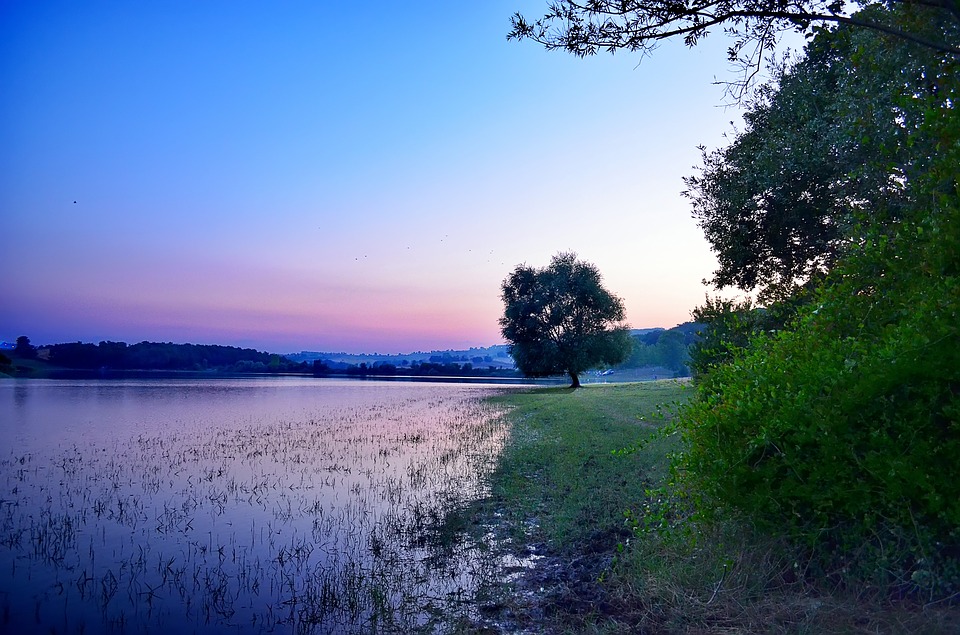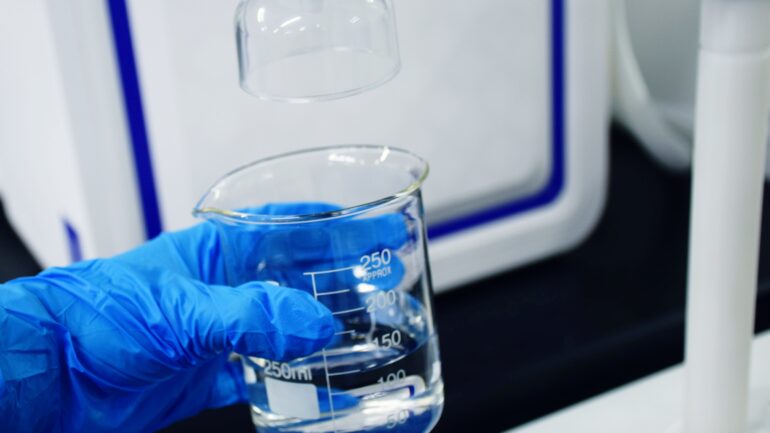By Orietta Estrada, Staff Writer for Save The Water™ | March 26, 2016
Impacts of Global Warming
Scientific Reports published a study in 2015 outlining the impact that global warming is having on a small Virginia island in the Chesapeake Bay. The results stated that Tangier Island will lose the majority of its landmass due to wave-induced erosion and sea-level rise. A conservative estimate of how much time the inhabitants of Tangier have to remain on the island is less than 50 years — it is expected that, by 2063, the island will be abandoned. With the loss of landmass on the island goes millions of dollars in ecosystem services. Should the sea-level rise intensify, the island will have to be evacuated sooner.
The reason for the sea-level rise, according to the study, is human failure to reduce anthropogenic greenhouse gas (GHG) emissions. In other words, human assisted global warming is causing the ocean to consume this island. Tangier Island is just one example of some of the problems that sea-level rise, via human induced global warming, can cause. Coastal Florida is another example of this and with unique problems such as saltwater intrusion.
Saltwater Intrusion
Saltwater intrusion occurs along coastlines in areas where groundwater has been depleted or is currently being over pumped. Because it can take thousands of years to replenish, groundwater stored in aquifers is not considered to be a renewable resource. According to the United States Geological Survey (USGS) groundwater accounts for approximately 30 percent of liquid fresh water.
Through Earth’s hydrologic cycle liquid water that is not absorbed by organisms, returned to the oceans as rain or is not carried off by the prevailing winds as water vapor, percolates through the ground and into groundwater aquifers. As the sea-level rises along coastlines already prone to floodings, such as Florida, or Tangier Island, freshwater aquifers can become contaminated with salt water. Saltwater intrusion is irreversible and once an aquifer is contaminated it is no longer suitable for use. Its main uses are for domestic purposes or agricultural.
According to Wired, 90 percent of South Florida’s water supply comes from aquifers and some cities in that region have had to shut down groundwater wells due to saltwater intrusion caused by sea-level rise. One of the most common causes of saltwater intrusion is the depletion of groundwater. Depleting groundwater resources creates a cone-shaped depression in the ground surrounding the pumped area and reverses the flow of groundwater. This means that instead of water flowing out of the aquifer, water is pulled into the aquifer from the sea (Reichard, et al.).
Stabilizing GHG Levels and Sea-level Rise
Global warming creates warmer ocean temperatures. The increase in ocean temperature causes water to expand, glaciers to melt, and subsequently, sea-level rise. Sea-level rise causes changes to evaporation patterns, ruins agricultural land and negatively impacts wildlife. The impact that climate change will have on coastal communities is dependent on the stabilization of GHG concentrations.
The buildup of CO2 in Earth’s atmosphere is a major factor in global warming and climate change. Just second to CO2, methane (CH4) is “21 times more effective in trapping heat” than CO2. That’s because the Global Warming Potential (GWP) associated with methane is amplified when it interacts with aerosols.
Therefore, by mitigating GHG emissions, sea-level rise might be delayed thus giving ecosystems and communities more time to adapt to a changing environment.
An atmosphere with a stabilized GHG concentration of 550 ppm could cause a global temperature rise between approximately 1.5 C and 4.7 C — an increase of 3 C could potentially expose 170 million people (and resources) to coastal flooding and increase the risk for saltwater intrusion and other negative impacts. Currently, as of January 2016, CO2 levels are at 402 ppm — up from last January which was 399 ppm.
Stabilizing GHG concentrations at 450 ppm would present a greater challenge because of current concentrations levels. It is estimated that an increase in global temperatures between 1 C and 3.8 C would occur at 450 ppm, possibly exposing 10 million people to coastal flooding. The total loss of the Greenland and West Antarctic Ice Sheets by 2100 could potentially cause a catastrophic sea-level rise of 12 meters.
As polar climates change, the effects (such as sea-level rise) are likely to be noticed worldwide and are being noticed in coastal communities in the U.S. Due to the positive feedback mechanisms of climate change and its susceptibility, the Arctic is projected to respond to climate change more intensely than anywhere else on earth — Alaska has warmed at double rate of the rest of the country — and coastal communities in AK are suffering.
Over a period from 1992 to 2011 glacial melt has contributed to sea-level rise, by 2100 sea-level is likely to rise in 95% of the ocean area. Reducing GHG emissions is important for mitigating sea-level rise. It’s the only way to help reduce the impacts that global warming will have on coastal communities and saltwater intrusion.
Reducing Carbon Footprints
Reducing GHG emissions begins with making environmentally conscious choices. By simply opting for one of many alternatives, one can make a significant impact on individual GHG emissions. The Environmental Protection Agency (EPA), The Nature Conservancy (TNC) and Carbonfootprint.com all offer carbon footprint calculators. Finding out how much CO2 you contribute to the atmosphere as an individual is a great way to start learning about how you can make a difference.
References
- ESRL Global Monitoring Division – Global Greenhouse Gas Reference Network. (n.d.). Retrieved March 15, 2016, from http://www.esrl.noaa.gov/gmd/ccgg/trends/
- Free Carbon Footprint Calculator | The Nature Conservancy. (n.d.). Retrieved March 15, 2016, from http://www.nature.org/greenliving/carboncalculator/
- Household Carbon Footprint Calculator. (n.d.). Retrieved March 15, 2016, from http://www3.epa.gov/carbon-footprint-calculator/
- IPCC. 1997. – R.T.Watson, M.C.Zinyowera, R.H.Moss (Eds) Cambridge University Press, UK. pp 517
- IPCC, 2014: Climate Change. 2014. “Synthesis Report. Contribution of Working Groups I, II and III to the Fifth Assessment Report of the Intergovernmental Panel on Climate Change”.[Core Writing Team, R.K. Pachauri and L.A. Meyer (eds.)]. IPCC, Geneva, Switzerland, 151 pp.
- National Climate Assessment. (n.d.). Retrieved March 15, 2016, from http://nca2014.globalchange.gov/report
- Patel, N. V. (2015, February 17). Rising Sea Levels Are Already Making Miami’s Floods Worse. Retrieved March 15, 2016, from http://www.wired.com/2015/02/rising-sea-levels-already-making-miamis-floods-worse/
- Wired. The World’s Water. (n.d.). Retrieved March 15, 2016, from http://water.usgs.gov/edu/earthwherewater.html
- Sanderson, K. (2009). Aerosols make methane more potent. Nature. Retrieved from http://www.nature.com/news/2009/091029/full/news.2009.1049.html
- Schulte, D. M., Dridge, K. M., & Hudgins, M. H. 2015. Climate Change and the Evolution and Fate of the Tangier Islands of Chesapeake Bay, USA. Sci. Rep. Scientific Reports, 5, 17890. Retrieved from http://www.nature.com/articles/srep17890
- Steinfeld, H., Food and Agriculture Organization of the United Nations., & Livestock, Environment and Development (Firm). (2006). Livestock’s long shadow: Environmental issues and options. Rome: Food and Agriculture Organization of the United Nations.
- Stern, Nicholas. 2008. “The Economics of Climate Change.” American Economic Review, 98(2): 1-37. DOI: 10.1257/aer.98.2.1
- William B. Mills, Chih-Fang Chung, and Katherine Hancock (2005) Predictions of Relative Sea-Level Change and Shoreline Erosion over the 21st Century on Tangier Island, Virginia. Journal of Coastal Research: Volume 21, Issue 2: pp. e36 – e51.doi:http://dx.doi.org/10.2112/03-0045.1





